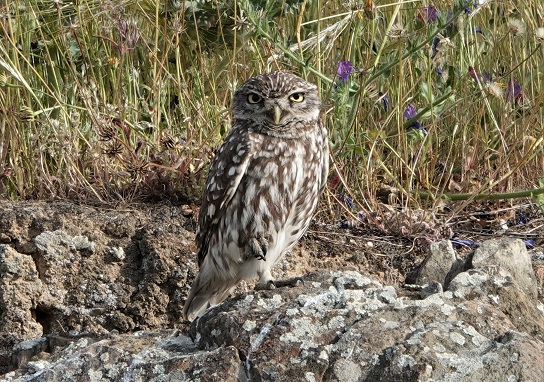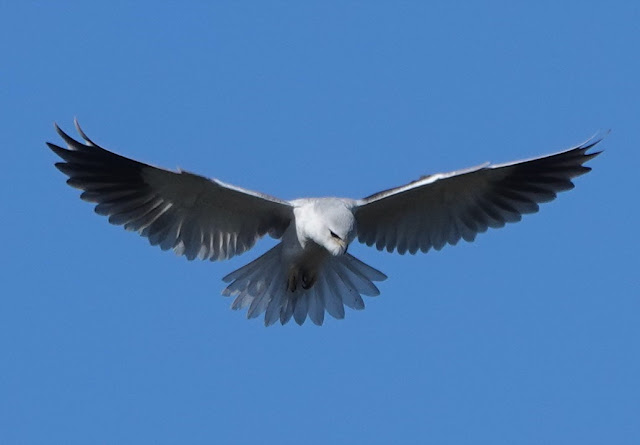 |
| Spanish Sparrows with some House Sparrows (Martin Kelsey) |
I can only describe the sound as being that of a large wave drawing back over a shingle bank, like a deep inhalation of breath, sucking. It signaled an eruption. From the yellowing expanse of ripe rice, which had seemed devoid of movement, a vast shape emerged. The sound came from feathers, pushing through the air, as hundreds upon hundreds of wings beated and the birds they carried rose in unison. One's impressions of this heaving surge depended wholly on scale, With my binoculars, it was as if I had plunged into the mass and into a realm of chaos, with birds seemingly moving at random. Lowering my binoculars, the viewing thus unaided, the flock took a wholly different form, almost as if it were some meta-organism in its own right, Its shape was smooth, its movement fluid and there was utter harmony. As it lifted from the crop it split, amoeba-like and all of the birds settled in two separate clumps of small trees. Here these sparrows sat and chirped, packed onto every available twig and branch. Suddenly an invisible conductor raised a baton and there was silence, like a moment's pause, before once again the sparrows rose as a cloud and plunged back into the crop. Once more there was silence and the crop bore no clue whatsoever of the hidden mass of birds, until barely a minute later the whole episode was repeated again: the sucking wave, the swirling form bifurcating onto the trees.
 |
| Spanish Sparrows (Martin Kelsey) |
Almost all of these birds were Spanish Sparrows. If you look closely at the photo at the top of this post, you might just spot a few male House Sparrows as well, with their grey crowns and duller cheeks. Perhaps the Spanish epiphet is a misnomer. Here in Spain the population is largely in the south-west, but Spanish Sparrows extend eastwards in the Mediterranean basis and onward into central Asia. The
Spanish Spanish Sparrows have their heartland here in Extremadura and they are doing magnificently. The flock I saw was a modest one compared to others I have encountered. The irrigated lands of the Guadiana basin, through conversion of large areas over recent decades to rice and maize production, have offered new feeding opportunities for many species, most emblematically perhaps the Common Crane, which are now feeding in large flocks on the stubble fields. But the swaying swirls of Spanish Sparrows are also taking full advantage, and not just clearing up the remnants of harvest. The flock I watched were feasting on the standing crop and here there is clear competition with the farmer. In summer and early autumn, the bang of bird-scarers can be a common sound, although their impact is dubious I think.
 |
| Sparrow flock (Martin Kelsey) |
However, the Spanish Sparrows in Extremadura are not restricted to this new agriculture by any means. A few years ago I spent many hours surveying the winter distribution of birds across a wide range of habitats, from river valleys to mountain peaks. Spanish Sparrows were the most numerous bird I counted. The billowing flocks can be found on the more traditional mixed-farming plains, where birds are finding seeds of wild flowers in abundance on the ground, and the same wave-like action can be seen with the flock in perfect unison rising to swamp a nearby bramble bush before descending again to forage. They are gregarious year round, finding in the isolated stands of alien eucalytus trees perfect locations for their huge colonies.
Like other sparrows, and families like finches and buntings, the fresh plumage following the post-breeding moult makes the birds look rather dull, with just a suggestion of their striking spring attire. During the course of the autumn and winter months the fringes of the feathers wear off, revealing the bright nuptial colours below. As the pictures below show, it is a vivid transformation.
 |
| Spanish Sparrow in fresh autumn plumage (Martin Kelsey) |
 |
| Spanish Sparrow in worn spring plumage (John Hawkins) |








Comments
Sam and Dave